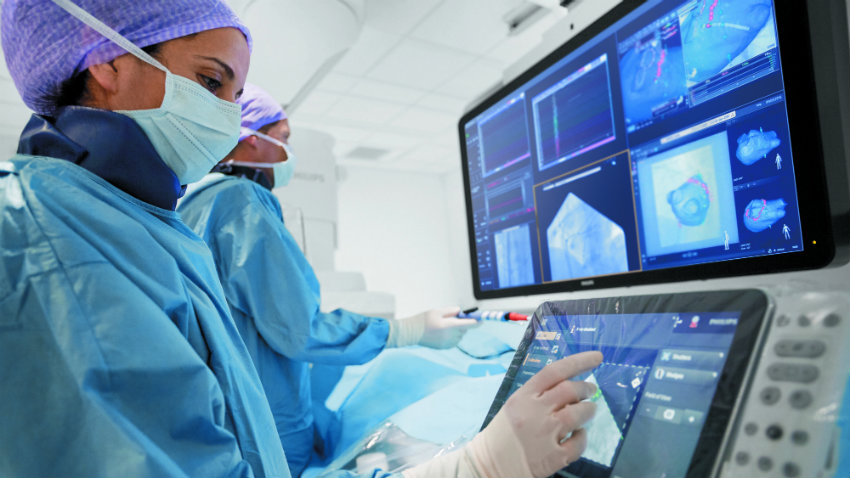For many people, going to the doctor is not a fun experience. It can be unpleasant, even. Sometimes downright uncomfortable. However, technology helps change that tune with each new solution or innovation designed to help make healthcare facilities safer, more efficient, and more comfortable for patients and staff alike.
People who have gone to the doctor will likely be well-acquainted with common problems about doctor’s visits. Long wait times, forgotten appointments, and the hassle of manual check-ins are just some of them. Doctor’s offices, on the other hand, also encounter problems of their own, including clogged phone lines, inefficient processes, and inadequate medical software, just to name a few.
Here are the modern tech solutions that help solve these problems and more:
- Unnecessary visits
A decade or so ago, patients had to visit the doctor’s office even if they only had a non-urgent concern. Either that or they would have to call the office and possibly wait on hold, eating up their own time and everyone else’s.
Unnecessary doctor’s visits consume the time, money, and effort of everyone involved. Healthcare providers pay for overhead, and patients have to spend money on gas and the appointment itself. Luckily, certain tech solutions make it possible for both parties to save their resources, particularly telemedicine and direct messaging.
With telemedicine software, patients can consult with healthcare providers for non-urgent concerns (things that they don’t need to come in for) in the comfort of their own home, helping them save time and money as well as reducing their exposure to illnesses in the hospital or clinic. On the other hand, direct messaging allows them to ask questions online instead of calling or visiting the office. For healthcare facilities, both of these tech solutions help reduce overhead costs and labor costs while decreasing the load on administrative staff.
- Long Wait Times
One of the worst parts about going to the doctor is the long waiting time. Seeing just how much this factor can affect the entire patient experience, many healthcare offices are using technology to help them reduce waiting time and make processes more efficient in general.
Patient portal. A patient portal is an online platform that allows patients to view their medical information, schedule non-urgent appointments, and make payments, among many other functions that they would otherwise have to do in the office.
Direct messaging. Aside from reducing unnecessary visits to the office, offering direct messaging also helps reduce calls to the office, which take up the time of medical staff and slow down work.
Mobile queue. With a virtual queue, patients can do other things (run errands or grab a coffee) than have to sit in the waiting room the entire time, helping manage patient flow and improve the overall patient experience.
Patient kiosk. A patient kiosk is a must-have for any healthcare facility. Manual check-ins can take up a lot of time and slow down the flow of patients in the office. With a patient kiosk, however, patients can sign in on a tablet or similar device, make payments, and electronically sign documents–all with much more ease and swiftness than the traditional way.
-
Missed Appointments
No-shows or latecomers can disrupt the smooth workflow in a doctor’s office. They also consume overhead and cause unnecessary hassle for rescheduling or cancellation, both for patients and medical staff.

There will always be patients that forget appointments and end up either missing them or coming in late. To help avoid this problem for both ends, healthcare providers can use automated appointment reminders that will notify patients of upcoming appointments a few days before and on the day itself. Appointment reminder software can also come with a confirmation system to help facilitate more efficient rescheduling and cancellation of appointments.
-
General Inefficiency
Inefficiency leads to numerous problems in the workplace, especially in a healthcare setting. Patient satisfaction declines, employee stress increases, and costs inevitably spike, leading to long-term consequences like millions of lost revenue, poor workplace culture, and a negative reputation in the community.
Fortunately, technology helps cure inefficiency in numerous ways. Medical software is a must to streamline workflow in the office. Electronic health records (EHRs) are also imperative to the efficient and secure exchange of medical information within the office or over different providers. EHRs also reduce errors, helping avoid unnecessary hiccups in the process.
Solutions that have already been mentioned (patient kiosks, patient portals, direct messaging, telemedicine) are also essential tools for increasing efficiency in the workplace.
-
Poor Reputation Management
All healthcare facilities, while mostly necessary, have a reputation to uphold in their respective communities. Most people are likely to trust doctors, nurses, and other healthcare staff because they need to have some form of license to do their jobs, but that doesn’t change the fact that providers still need to manage their reputation well.
Reputation management software helps facilities manage feedback from patients without hiring someone to do it. This type of software categorizes feedback, allowing providers to display the positives and address the negatives promptly.
With medical and healthcare technology on the rise, we can hopefully expect more solutions to eradicate these problems and more in the future.


:max_bytes(150000):strip_icc()/labgrownlede-2b7540f7f7404558a08f1a555862f3d3.jpg)










